|
Wisley's Alpine Log
By Paul Cumbleton
Log 6 11 October 2007
While it is pouring torrential rain outside, this seems a good day to sit in and do this log. Previous days this week have been dry and warm and encouraged various flowers to open. In particular, the alpine meadow has been carpeted with a purple haze created by Crocus nudiflorus. The display this year has been the best I remember in many years.
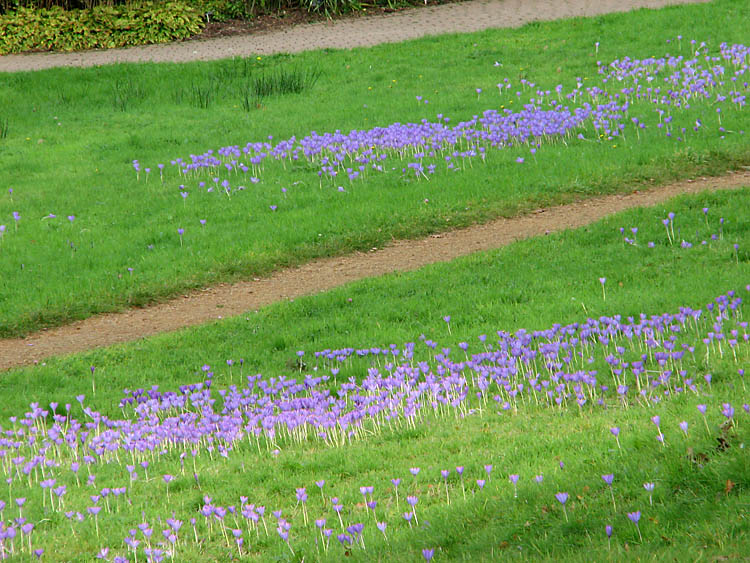
Crocus nudiflorus on the Meadow
Crocus nudiflorus comes from SW France and the NE parts of Spain but is also naturalised in a few places in the UK. It likes moist meadows that do not dry out entirely at any time - I suspect the good display this year has been partially helped by the moist summer we have had. It can spread by stolons to colonise large patches over time. We have just a few of Crocus speciosus in the meadow too, but these don't seem to stand up to the weather as well. Setting off the Crocus nudiflorus display has been the increasingly developing autumn colour, such as from the Acer palmatum var. dissectum
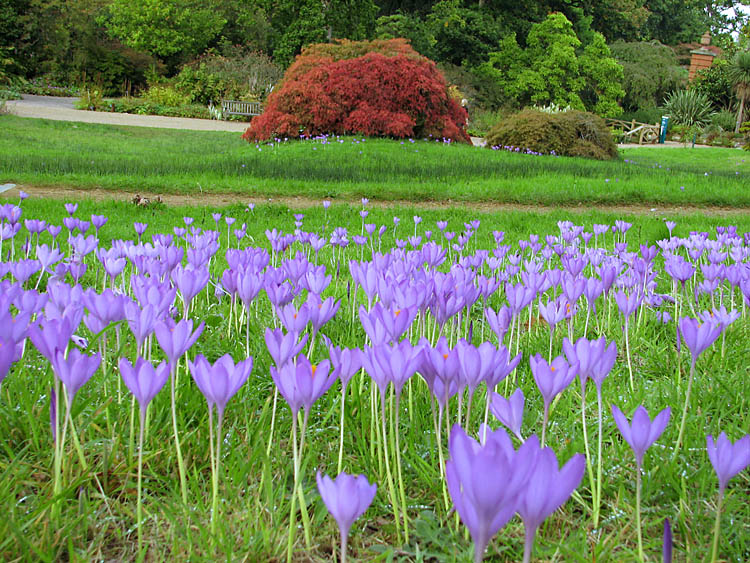
Crocus nudiflorus and Acer palmatum var. dissectum
On the rock garden, the star of the moment is undoubtedly the Japanese Chrysanthemum yezoense which makes bright glowing white patches in two or three locations.
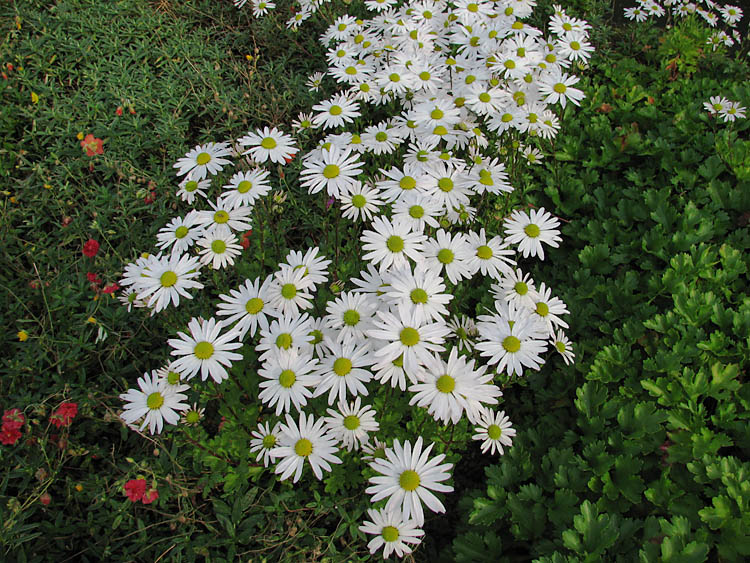
Chrysanthemum yezoense
This is an easy, trouble-free plant that reliably gives welcome and long lasting autumn flowers year after year. It spreads slowly by stolons and rhizomes which can be divided in the Spring.
Another plant that flowers over an extended period throughout summer and into late autumn is Ourisia coccinea from Chile. This prefers a partially shaded spot here in the southeast and always a moist place with good humus content. It spreads to form a ground-covering mat and where really happy may even be a bit invasive.
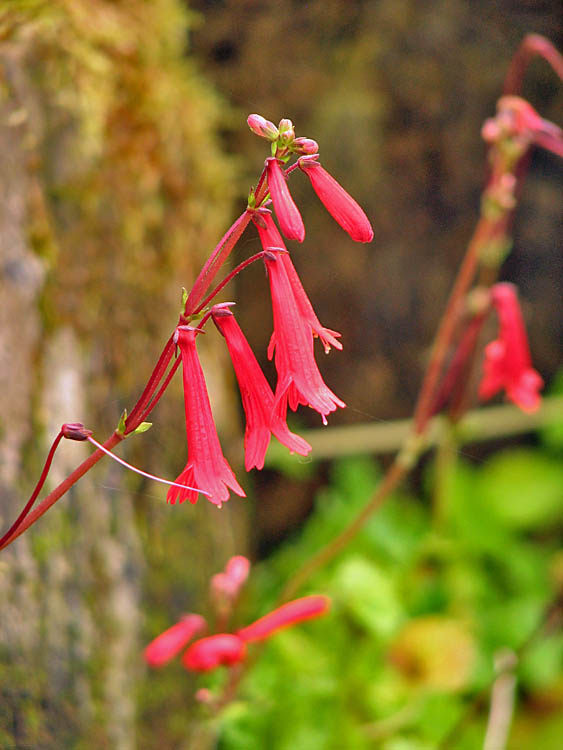
Ourisia coccinea
Autumn also brings the flowers of Saxifrage fortunei. The first of these is now blooming next to one of the pools.
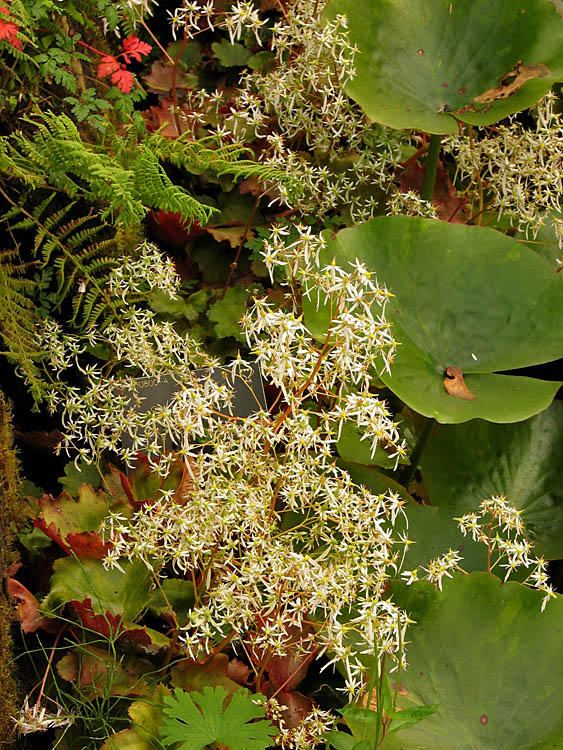
Saxifraga fortunei
This year also seems to have been a good year for fungi and this week the Shaggy ink caps have been particularly showy.
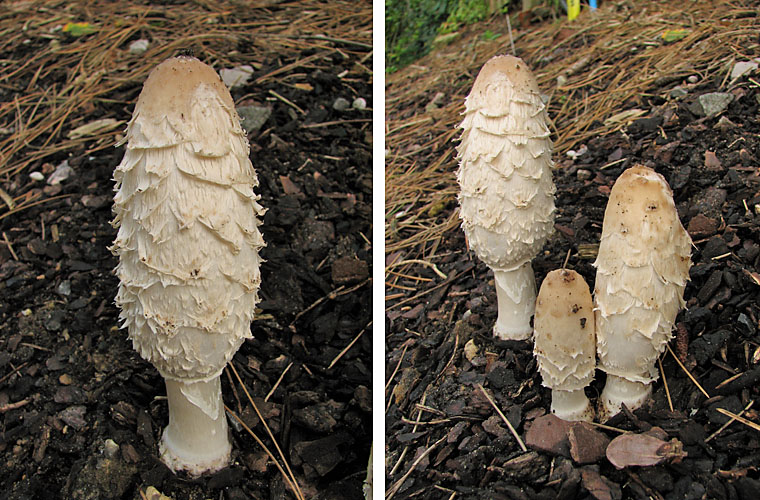
Shaggy Ink Cap
Like the rest of you, we are avid readers of Ian Young's fantastic bulb log. We have about 4000 pots of bulbs in the alpine section so inevitably from time to time I'll be straying into his territory but will strive to compliment and compare and not cover just the same ground. All summer we have been re-potting; with such a large collection we start almost as soon as they have died down and finish rather too late for comfort! This week we did the very last items which happened to be the 'Juno' Irises. Our method for these was adapted from what we learnt from the master ex of Kew, Tony Hall, so all credit to him for the information shared here. The first step is to very carefully tip the pot on its side and to gently tap and remove all the old compost. The roots are brittle and easily broken so great care is required. The plants are then left bare rooted in their pots overnight - the roots become a bit more pliable when left exposed like this.
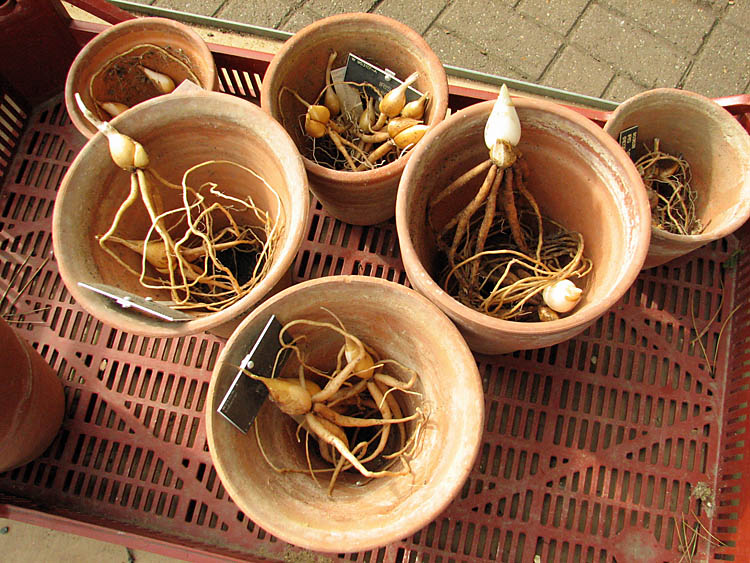
Juno Irises de-potted and being left until next day
The next day, we remove all remaining bits of compost along with any dead stalks, old loose tunics and dead roots. Any entangled roots are carefully freed. We use blunt tweezers to remove any old tissue from the basal plate, taking great care not to damage any newly emerging roots or offsets. When cutting away dead roots etc, a sharp scalpel is best. This should be sterilised between plants to prevent any possible transmission of viruses. (Sterilize by dipping in alcohol and then flaming). Plants treated this way are then left another day to let the cut surfaces dry. The cut end can also be treated with sulphur to help prevent entry of diseases. Junos usually have long roots, so a long pot is necessary.
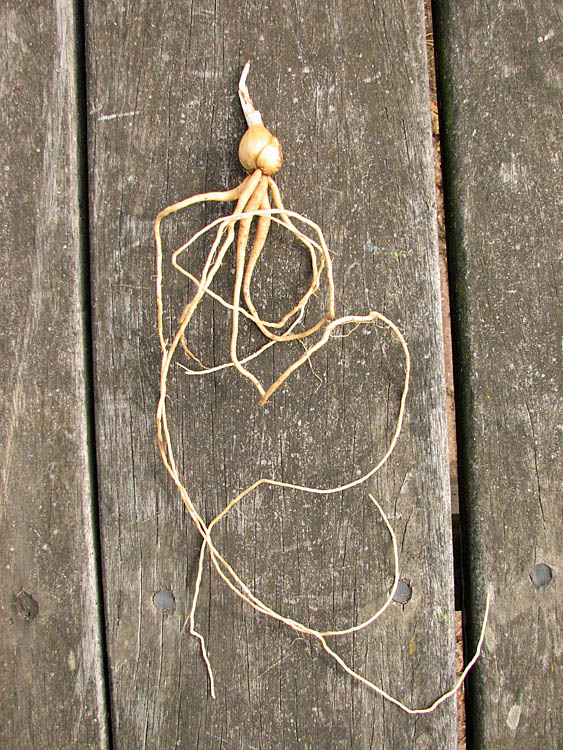
Juno with long roots, ready for potting
For potting, our compost mix for Junos is: 2 parts grit (6mm), 1 part peat and one part John Innes No. 3 (all parts by volume). To this we add some dolomitic lime (about 4g per litre of mix) and some fertiliser (Vitax Q4 at about 3g per litre of mix). The plants are held in the middle of the pot and at a height where the tip of the bulb is level with the rim of the pot.
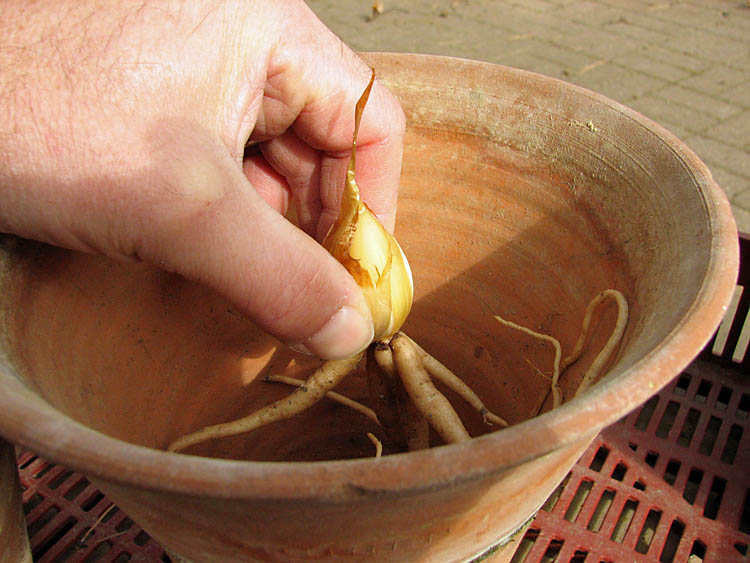
Potting a Juno
The compost mix is poured in around, while at the same time trying to gently straighten any bent roots. The compost is added until it reaches the bottom of the bulb and the rest of the space is filled with a deep layer of grit. A thorough watering in and the job is done.
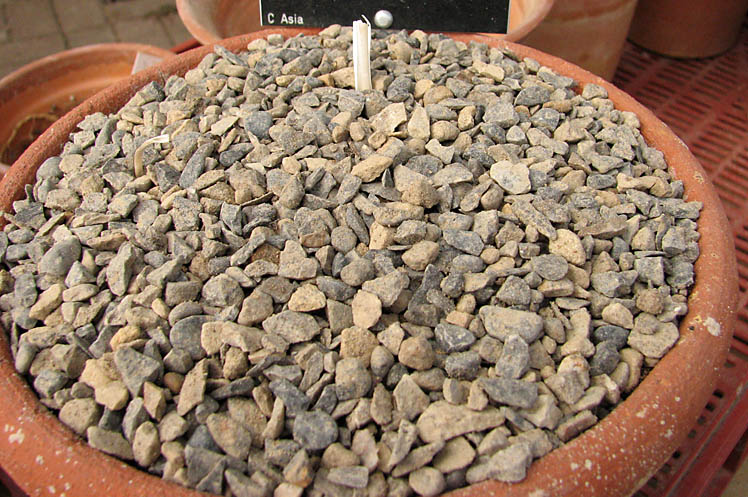
Repotting complete
Finally this time, another peek at some things on display in the alpine house this week
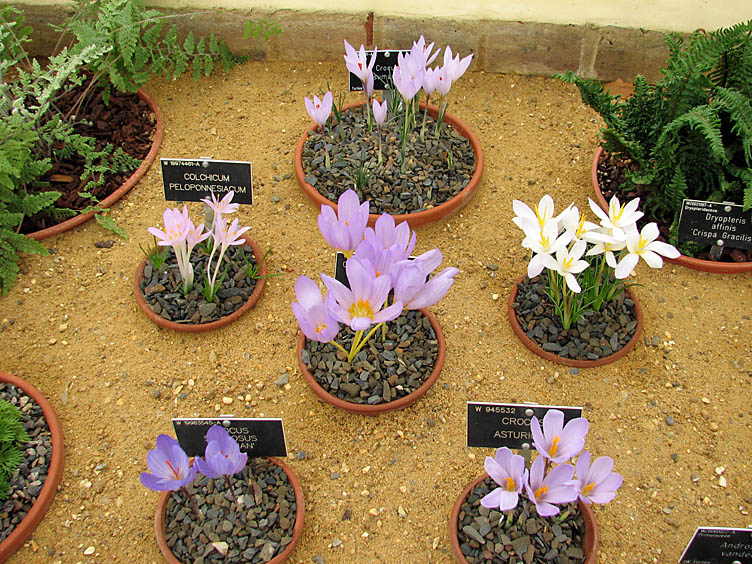
Autumn crocuses
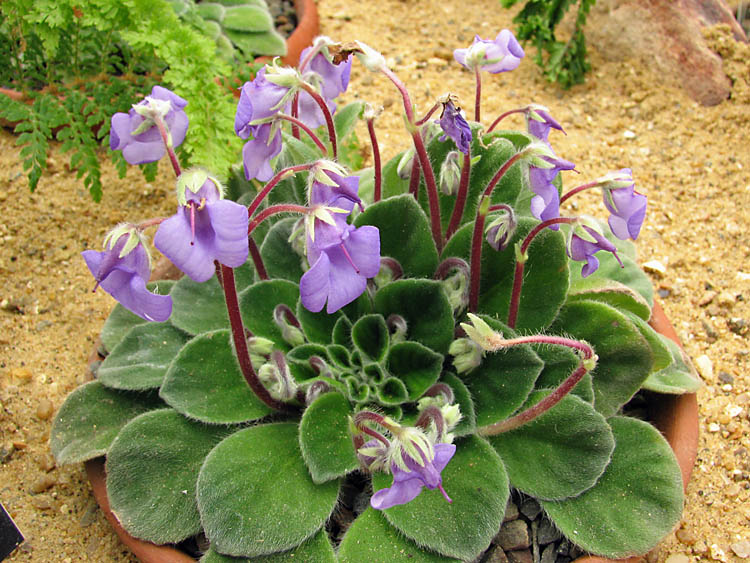
Petrocosmea sericea
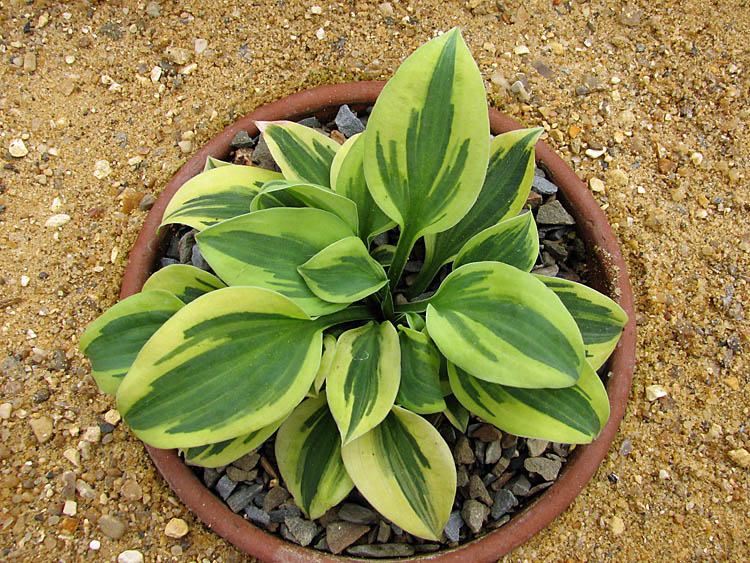
Hosta 'Hope'
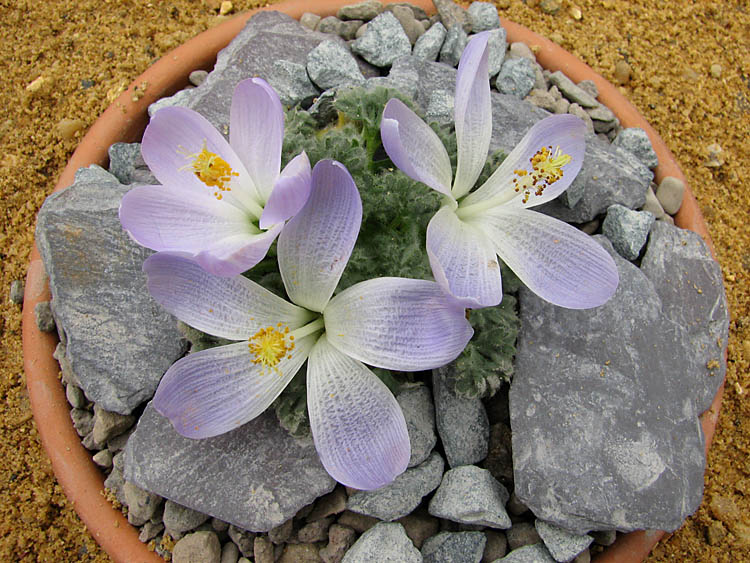
Nototriche macleanii
The Nototriche is a favourite - this species is the only one that seems to stay compact in cultivation, most of the others stretching for the light regardless of how much sun you give them. Aren't the flowers reminiscent of a crocus?
One last view of the display:
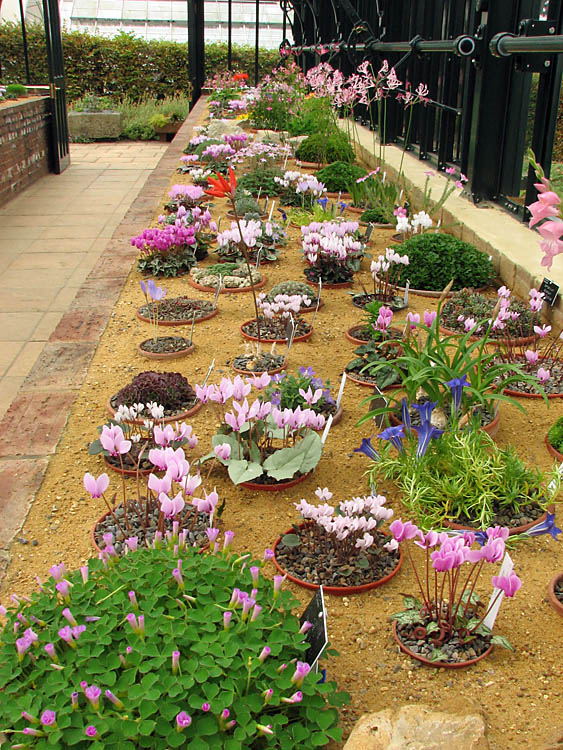
Display house in early October
^ back to the top ^
|

